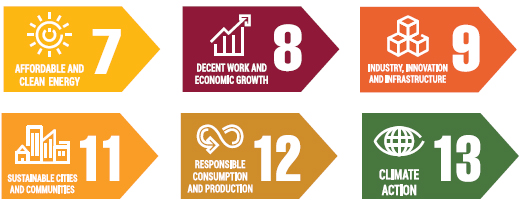We understand that, to create sustained value for our stakeholders, our strategy must recognise and balance the inherent trade-offs we face.
In developing our strategy, we consider the potential trade-offs our strategic decisions create to ensure we fully comprehend these decisions as well as work to maximise positive outcomes and curb negative impacts.
We can link each of our trade-offs to the achievement of one or more of our strategic objectives.
We know that achieving our objectives must be balanced and we will not necessarily be able to maximise all objectives concurrently. However, we have robust processes and decision-making frameworks to make choices and trade-offs between these objectives. Over time, each objective will be realised.
Balancing the adverse environmental impact of coal with the need to support South Africa's socio-economic development
As a developing country, South Africa depends on reliable energy to fuel its growth. However, coal has a noticeable impact on environmental systems. As the frequency and scale of climate change-related events continue to grow so has the imperative to transition to a low-carbon economy. We support this imperative but we are mindful that structural economic transitions take time. Without adequate planning, transitions like these have historically had negative impacts on the most vulnerable in society. Our purpose is to power better lives in Africa and beyond. To achieve this, we continue carefully considering the critical trade-offs of the economy's immediate and affordable energy needs along with the growing and urgent need to reduce carbon emissions to sustain our environmental systems. Our Sustainable Growth and Impact strategy is designed to balance these seemingly competitive needs, ensuring we participate in the just transition to a low-carbon economy while delivering on our early value coal strategy in a prudent and responsible manner.

Balancing capital allocation with our growth areas
Given that we intend to become a multi-core business, our capital allocation approach must support our short and long-term growth ambitions. We will need to allocate finite capital to opportunities in minerals and renewable energy that will enable our strategic objectives.
Our approach to capital allocation is agile and an integral component of our strategy creation and delivery. Our capital allocation process is supported by governance that supports disciplined and unbiased decision making aligned to our portfolio ambition.
Our strategic objectives and their metrics (which include stringent financial return metrics for each growth area) will continue to provide the guide for capital allocation so that we objectively assess strategic trade-offs related to capital allocation.
Balancing our growth ambitions with our carbon-neutral targets while appreciating that absolute carbon (total emissions) might increase with acquisitions
The intent to decarbonise is at the heart of our Sustainable Growth and Impact strategy. Our acquisition targets will include their own carbon emission and carbon intensity figures that we will have to evaluate in our growth journey.
Key measures related to carbon intensity and emissions are included in our strategic performance metrics and will be a key tool for evaluating and balancing trade-offs related to growth. A key role of our decarbonisation roadmap is to give us a better understanding of future scenarios and projections for our business. This will give us further clarity on potential shortfalls and opportunities.

Balancing operational focus and the need for diversification
As a business that is transitioning towards a carbon neutral portfolio by 2050, we recognise that portfolio diversification is essential in balancing risk and reward across multiple time horizons.
Our operating coal business remains a key source of capital to support this transition and managing this business optimally while motivating our workforce is essential in achieving our ambition. We enable this through balanced performance scorecards at all levels of the business, clear alignment of strategic goals, and candid conversations led by our CEO and executive team.
Balancing short-term business performance against long-term ambition
Our scenario and risk modelling process highlights a potential global recession scenario and the implications this will have on our business in the short term. Reducing coal prices and increasing inflation and energy costs result in lower margins unless stringent cost optimisation is undertaken.
We have to balance the need for short-term business resilience against resource allocation research and development that is essential in achieving our long-term strategy.
Our portfolio approach towards resource allocation guides us as we manage this tension.
 Report Index
Report Index